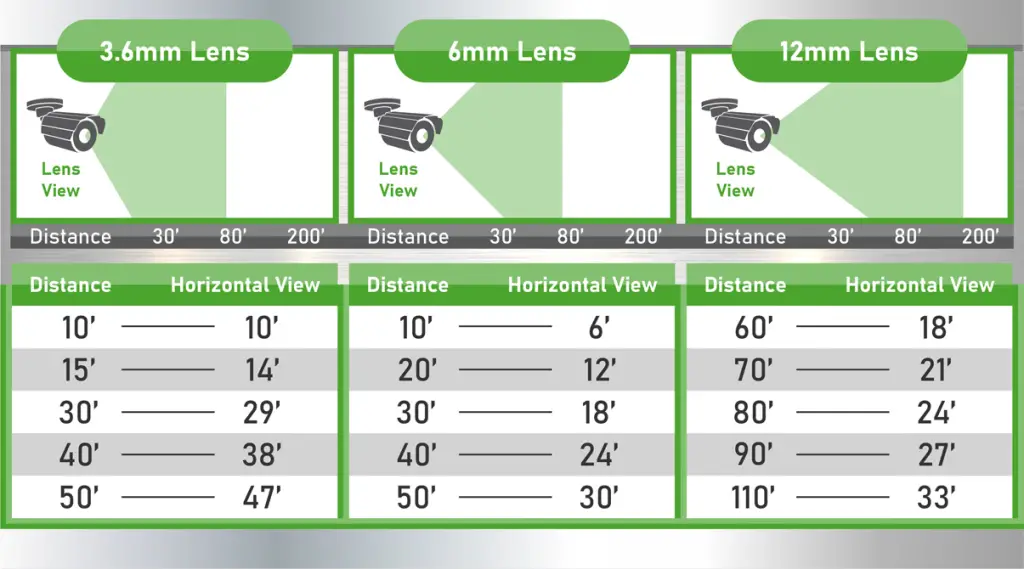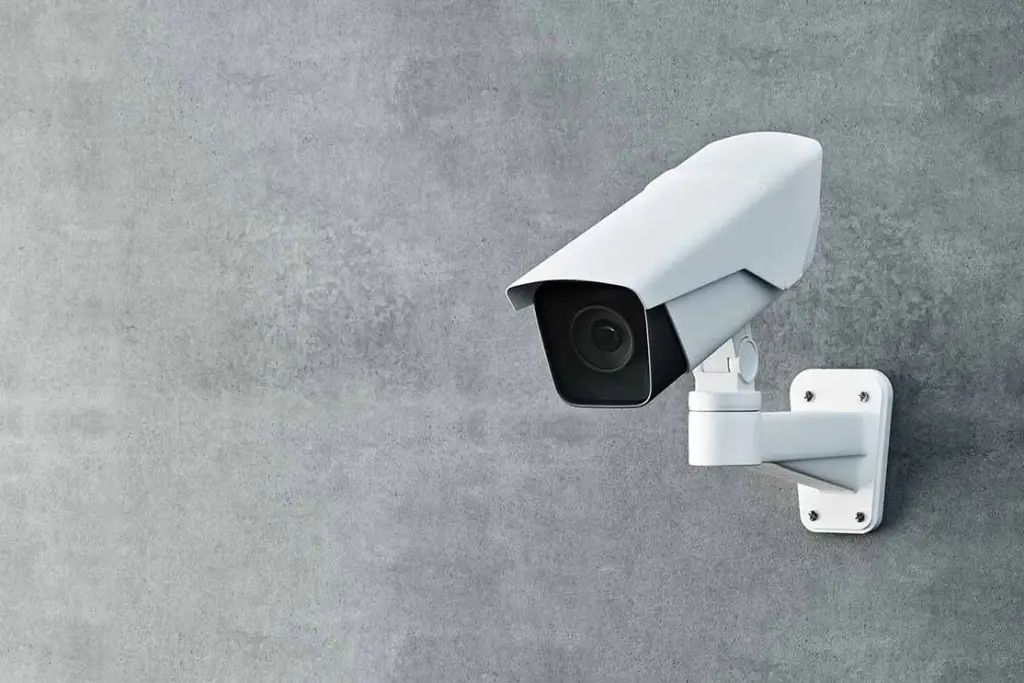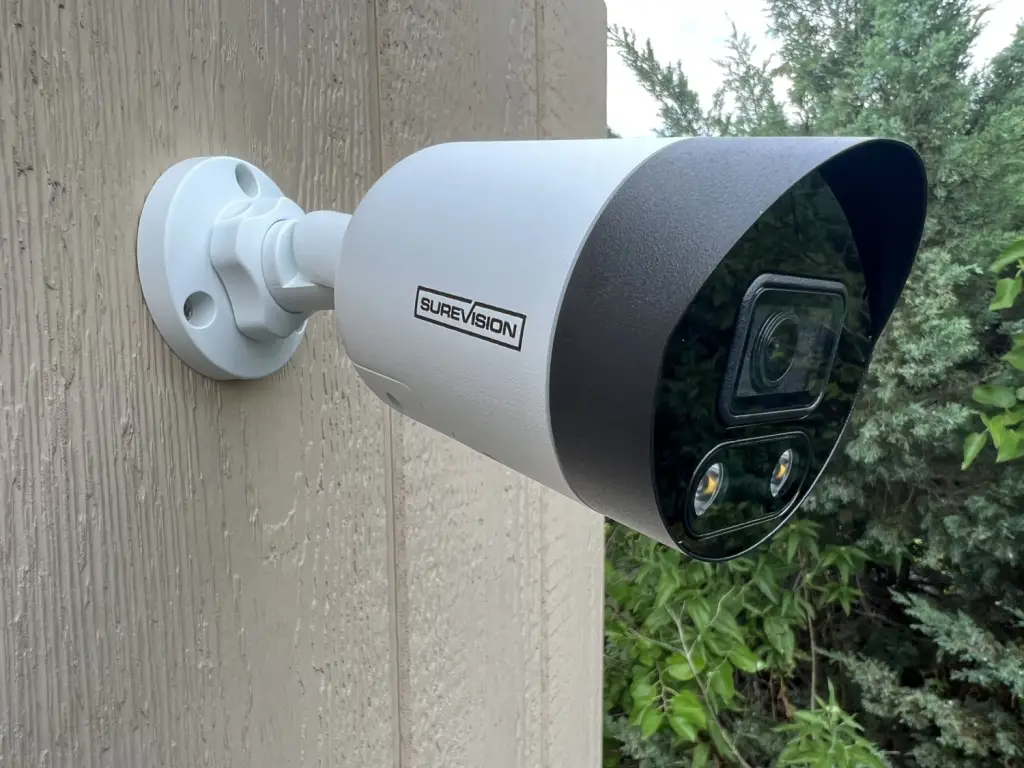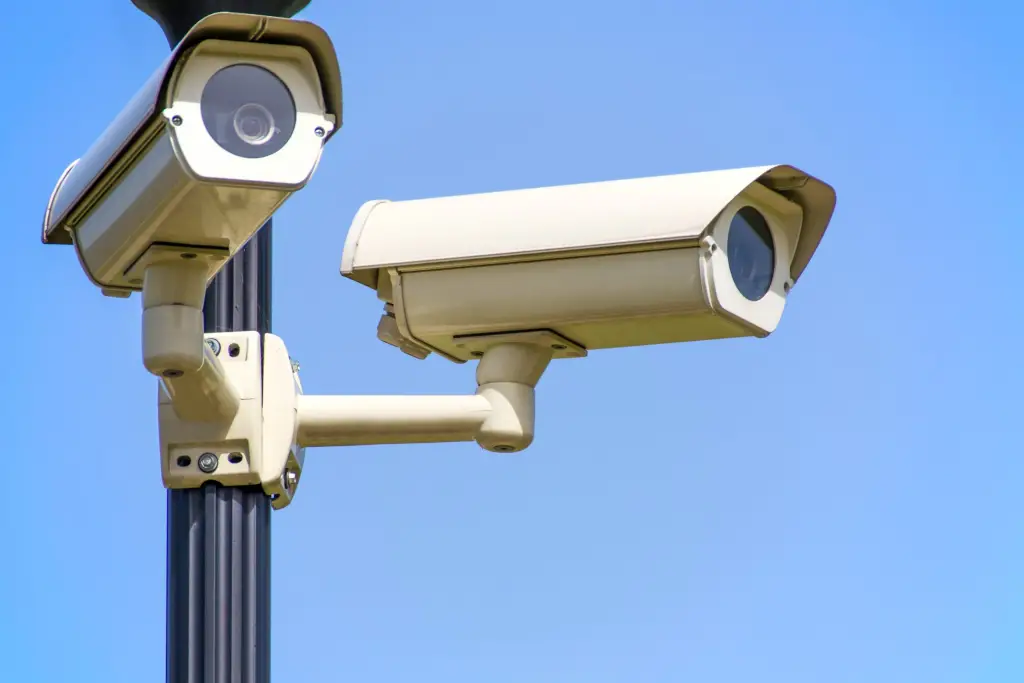When it comes to keeping your home safe, security cameras are a powerful tool in your arsenal. But have you ever wondered just how far these electronic eyes can see? Can they really provide the coverage and detail you need to protect your property?
A home security camera should be able to see as far as 30 – 150 feet. But specialized security cameras like the PTZ Outdoor Camera and the 900MHz Wireless Security Camera System can see as far as 1000 and 2000 feet respectively
The distance a security camera can see is influenced by a variety of factors, from the type of lens and sensor used to the lighting conditions and placement of the camera itself.
In this comprehensive guide, we’ll dive deep into the world of security camera range, exploring the key elements that determine a camera’s viewing distance and what you can do to maximize its potential.
As a homeowner looking to keep an eye on your front porch or in need of a sprawling surveillance system, understanding the capabilities and limitations of your cameras is crucial.
Also read: How to Secure Your Home Wireless Network for Teleworking
Take our hort quiz
The Basics of Security Camera Range

Before we get into the nitty-gritty of how far security cameras can see, let’s establish some basic terminology and concepts. When we talk about a camera’s “range,” we’re generally referring to two key metrics:
- Detection range: This is the maximum distance at which a camera can detect the presence of a person or object. At this range, you’ll be able to see that something is there, but you may not be able to make out fine details.
- Identification range: This is the maximum distance at which a camera can provide enough detail to identify a person or object. At this range, you should be able to clearly see faces, license plates, or other distinguishing features.
It’s important to note that a camera’s detection range will always be greater than its identification range. You might be able to tell that a person is walking through your yard from 100 feet away, but you probably won’t be able to see their facial features until they’re much closer.
So what determines a camera’s detection and identification range? There are several key factors at play, which we’ll explore in depth throughout this post. But in general, a camera’s range is influenced by:
- The focal length and aperture of the lens
- The size and sensitivity of the image sensor
- The resolution of the camera
- The amount and type of ambient lighting
- The placement and angle of the camera
- The presence of any obstructions or environmental factors
Lens Focal Length and Aperture

One of the most important factors in determining a security camera’s range is the lens. The lens is responsible for gathering light and focusing it onto the camera’s image sensor, and its characteristics can have a big impact on how far the camera can see.
There are two main aspects of the lens that come into play here: focal length and aperture.
Focal Length
Focal length is the distance between the center of the lens and the point where light rays converge to form a sharp image (usually the camera’s sensor). It’s measured in millimeters (mm) and is often expressed as a number followed by “mm,” such as 4mm or 50mm.
In general, a longer focal length will result in a narrower field of view but a longer range. Imagine looking through a telescope – you can see very far away, but your view is limited to a small area.
On the other hand, a shorter focal length will give you a wider field of view but a shorter range. Think of a fisheye lens – you can see a lot of the surrounding area, but objects in the distance will appear very small.
For security cameras, a focal length between 2.8mm and 12mm is common. A 2.8mm lens will give you a very wide angle of view (around 90 degrees) but a relatively short range, while a 12mm lens will have a much narrower field of view (around 30 degrees) but a longer range.
Aperture
Aperture refers to the opening in the lens that allows light to pass through to the sensor. It’s measured in f-stops, with a lower f-stop indicating a wider aperture (more light) and a higher f-stop indicating a narrower aperture (less light).
In general, a wider aperture (lower f-stop) will result in better low-light performance and a shallower depth of field (meaning objects in the foreground and background may appear blurry). A narrower aperture (higher f-stop) will give you a greater depth of field but may struggle in low-light conditions.
For security cameras, an aperture of f/2.0 or wider is ideal for low-light performance. However, a narrower aperture of f/4.0 or higher may be necessary to maintain a good depth of field and ensure that the entire scene is in focus.
Image Sensor Size and Sensitivity

The image sensor is the electronic component that converts the light captured by the lens into a digital image. Its size and sensitivity can have a big impact on a camera’s range and low-light performance.
Sensor Size
Image sensors come in a variety of sizes, from tiny 1/4″ sensors found in many smartphones to large full-frame sensors used in professional DSLR cameras. In general, a larger sensor can capture more light and produce better image quality, especially in low-light conditions.
For security cameras, a 1/3″ or 1/2.7″ sensor is common. These sensors are large enough to provide good image quality and low-light performance, but small enough to keep the camera compact and affordable.
Sensor Sensitivity
In addition to size, the sensitivity of the image sensor also plays a role in a camera’s range and low-light performance. Sensitivity is measured in ISO, with a higher ISO indicating greater sensitivity to light.
However, there’s a trade-off to using a high ISO. As the ISO increases, so does the amount of digital noise in the image. This can result in grainy or speckled footage, especially in low-light conditions.
For security cameras, an ISO range of 100-6400 is common. This allows the camera to adapt to a variety of lighting conditions while maintaining good image quality. Some high-end cameras may offer even higher ISO ranges for extreme low-light performance.
Camera Resolution and Compression

The resolution of a security camera refers to the number of pixels in the image it produces. A higher resolution means more pixels and more detail, which can be important for identification purposes.
For security cameras, resolution is typically measured in megapixels (MP). A 1MP camera will produce an image with around 1 million pixels, while a 4MP camera will have 4 times as many pixels.
In general, a higher resolution will result in better image quality and the ability to zoom in further without losing detail. However, there are some trade-offs to consider:
- Higher-resolution cameras require more storage space and bandwidth to record and stream footage.
- Higher-resolution cameras may have a shorter range than lower-resolution cameras, as the increased pixel density can make it harder to see fine details at a distance.
- Higher-resolution cameras may be more expensive than lower-resolution models.
For most security applications, a resolution of 2MP to 4MP is sufficient. This provides enough detail for identification purposes while keeping storage and bandwidth requirements manageable.
In addition to resolution, the compression method used by the camera can also impact image quality and range. Compression is used to reduce the size of the video files produced by the camera, making them easier to store and stream.
The most common compression methods used in security cameras are H.264 and H.265. H.265 is a newer standard that offers better compression efficiency than H.264, meaning it can produce smaller file sizes without sacrificing image quality.
Lighting Conditions and Night Vision

The amount and type of ambient lighting can have a big impact on a security camera’s range and image quality. In general, cameras perform best in well-lit environments with consistent lighting.
However, many security cameras are designed to operate in low-light or even no-light conditions. This is where night vision comes into play.
There are two main types of night vision used in security cameras: infrared (IR) and thermal imaging.
Infrared Night Vision
IR night vision works by flooding the scene with invisible infrared light, which is then reflected back to the camera’s sensor. This allows the camera to “see” in complete darkness, producing a black and white image.
The range of an IR camera depends on the strength and number of IR LEDs used. A typical IR camera may have a range of 30-100 feet, while high-end models with powerful LEDs can see up to 300 feet or more.
However, IR night vision has some limitations. It can be affected by fog, rain, or other environmental factors that scatter the IR light. It also tends to produce a somewhat grainy or “washed-out” image compared to daylight footage.
Thermal Imaging
Thermal imaging cameras detect heat rather than light, allowing them to “see” in complete darkness and through obstacles like smoke or fog. They produce an image that shows the heat signature of objects in the scene, with warmer objects appearing brighter.
Thermal cameras have a much longer range than IR cameras, with some models capable of detecting a person from over 1,000 feet away. However, they are also much more expensive than IR cameras and produce a lower-resolution image.
For most security applications, an IR camera with a range of 50-100 feet is sufficient for night-time monitoring. Thermal cameras are typically only used in specialized applications where long-range detection is critical, such as perimeter security or search and rescue operations.
Camera Placement and Angle

The placement and angle of your security cameras can have a big impact on their effective range and coverage area. Here are some tips to keep in mind:
Height
In general, mounting cameras higher will give you a longer range and a wider field of view. However, if the camera is too high, it may not be able to capture fine details or facial features.
A good rule of thumb is to mount cameras 8-10 feet off the ground. This provides a good balance of range and detail for most applications.
Angle
The angle of the camera relative to the area you want to monitor is also important. A camera pointed straight down will have a very limited range, while a camera pointed too far up may miss important details.
For most applications, a camera should be angled slightly downward, between 10-30 degrees from horizontal. This provides a good balance of range and detail while minimizing the amount of sky or ceiling in the frame.
Obstacles
Be mindful of any obstacles that may block the camera’s view or cause reflections and glare. This includes things like trees, poles, or shiny surfaces.
If possible, try to position cameras so that they have a clear line of sight to the areas you want to monitor. If obstacles are unavoidable, consider using multiple cameras to cover the area from different angles.
Wireless Signal Strength
If you’re using wireless cameras, the strength and reliability of the wireless signal can also impact performance. Obstacles like walls, floors, and metal objects can all interfere with the signal and reduce range.
To ensure reliable performance, try to minimize the distance and number of obstacles between the camera and the receiver. If possible, use wired cameras for critical areas or long-range monitoring.
Putting It All Together
Now that we’ve covered the key factors that impact a security camera’s range, let’s put it all together and see how they interact in the real world.
Imagine you’re setting up a security camera to monitor your front yard. You want to be able to see the entire yard, from the street to your front door, and you need to be able to identify faces and license plates.
Based on the factors we’ve discussed, here’s what you might look for in a camera:
- A lens with a focal length of 4-8mm, which will provide a good balance of range and field of view for a typical front yard.
- An aperture of f/2.0 or wider, which will allow plenty of light to reach the sensor and provide good low-light performance.
- A sensor size of 1/3″ or larger, which will provide good image quality and low-light performance.
- A resolution of at least 2MP, which will provide enough detail for identification purposes.
- IR night vision with a range of at least 50 feet, which will allow the camera to see in the dark.
- Placement at a height of 8-10 feet and an angle of 10-30 degrees downward, which will provide a good balance of range and detail.
Of course, every situation is different, and you may need to adjust these parameters based on your specific needs and environment. But by understanding the key factors that impact a camera’s range, you can make informed decisions and choose the right camera for the job.
Conclusion
As we’ve seen, the range of a security camera is influenced by a variety of factors, from the lens and sensor to the lighting conditions and placement of the camera itself. By understanding these factors and how they interact, you can choose the right camera for your needs and ensure that you have the coverage and detail you need to keep your property safe.
So go forth and explore the world of security camera range with confidence! With the right knowledge and tools, you can create a surveillance system that will give you peace of mind and help you protect what matters most.






